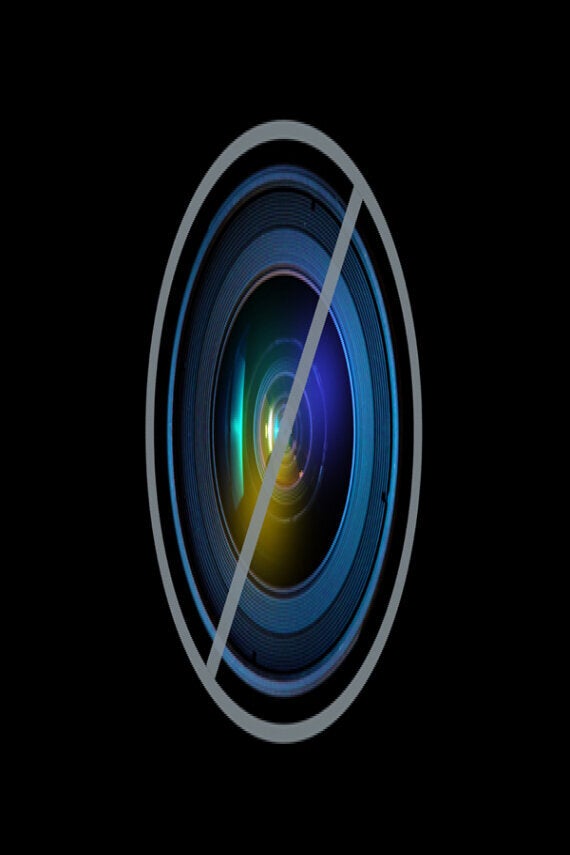Prince Harry has confirmed he killed Taliban insurgents during his latest tour of Afghanistan.
As a gunner in Apache attack helicopters, the royal flew on scores of missions with his fingers on the triggers of deadly rockets, missiles and a 30mm cannon.
And now that the 28-year-old is bound for the UK after his second deployment to the war-torn country, it can be reported he took enemy fighters "out of the game" during his 20-week posting.
"Yeah, so lots of people have," he said matter-of-factly, after being asked if he had killed from the cockpit.
"The squadron's been out here. Everyone's fired a certain amount."

In action: Prince Harry is on his way back to the UK
Harry, who is known as Captain Wales in the army, was sent on all manner of missions over Helmand Province in southern Afghanistan, from supporting allied troops fighting the Taliban at close quarters to accompanying British Chinook and US Black Hawk helicopters on daring casualty evacuation (CASEVAC) missions.
His work as a JTAC (Joint Terminal Attack Controller) during his first tour of duty in 2007-08 saw him call in air strikes on enemy positions, which he watched unfold on a monitor nicknamed "Kill TV".
This time, it was him in the hot seat.
"Take a life to save a life," he shrugged. "That's what we revolve around, I suppose.
"If there's people trying to do bad stuff to our guys, then we'll take them out of the game, I suppose."
The prince's deployment with 662 Squadron, 3 Regiment Army Air Corps, allowed him to step back from the public eye, but speaking to reporters while stationed at Camp Bastion he admitted he had "let himself and his family down" by romping naked in a Las Vegas hotel suite just weeks earlier.
Life in the army is "as normal as it's going to get" for Harry and he relishes having the chance to muck in as "one of the guys", but he said his father, the Prince of Wales, is always reminding him of his position.
The current third-in-line to the throne was in Afghanistan when it was announced the Duke and Duchess of Cambridge are expecting their first child, and he said he was "thrilled" for the couple and "can't wait to be an uncle".
Captain Wales was hailed by his colleagues and superiors for fitting into his unit well and for being "on top of his game" during the "extremely busy" and dangerous tour.
However, the prince revealed he would rather have returned to fight on the frontline alongside troops from his regiment, the Household Cavalry.
He also attacked the media for the "rubbish" they report.
Unlike his last tour of duty, there was no blackout preventing the press from reporting that he was in Afghanistan this time, but an agreement was reached that media would not speculate on his deployment.
Harry was given no special treatment during his tour, and he worked, rested, ate and slept in exactly the same conditions as the other pilots in his squadron.
The prince flew on deadly sorties over the barren desert - often for hours on end - in support of International Security Assistance Force (Isaf), Afghan National Army (ANA) and Afghan National Police (ANP) fighters.
SEE ALSO:
However, he said the role of British Apache helicopters has changed since their arrival in 2006 with fewer contacts with the enemy than in previous years, as Isaf is increasingly mentoring the Afghan security forces, rather than fighting insurgents directly.
The frequency of engagements fluctuates throughout the year and winter tours generally have fewer contacts than in the summer.
But Harry said his unit - nicknamed 662 "Royal" Squadron by some - needed to fire their weapons more than the Apache pilots at the same time the previous year.
"That's just the way that it's balanced out," he said.
"Mainly due to weather, well whatever, the reasons I don't know."
Apaches are used for a variety of missions in Task Force Helmand, and on most occasions their presence alone is enough to deter the enemy.
Harry flew on planned and unplanned operations during the day and night across his tour, and the prince said accompanying Chinook helicopters on CASEVAC tasks - known by the call sign Tricky - was the most important role for Apaches.
Harry's frank comments about shooting dead Taliban fighters come as no surprise, as any soldier fighting on the front line in Afghanistan is expected to take on the enemy - and Harry's job as a co-pilot gunner (CPG) is widely known.
He insisted killing the enemy was not what motivated him to become an attack helicopter pilot.
"It's not the reason I decided to do this job," he said.
"The reason to do this job was to get back out here and carry on with a job."
He explained how the roles of Apaches themselves and the CPGs inside the cockpit have developed since the aircraft were first introduced in Helmand.
"It used to be very much: front seat, you're firing the whole time.
"Now, yes we fire when we have to - take a life to save a life - but essentially we're more of a deterrent than anything else.
"We're a hugely reliable asset and the main thing for us is the tricky escorts.
"If guys get injured, we come straight into the overhead, box off any possibility of an insurgent attack because they look at us and just go, 'Right, that's an unfair fight, we're not going to go near them'.
"But occasionally we get taken on, the guys get taken on, even when we're in the overhead.
"It's a pretty complex job for everybody involved.
"But it's not just about the shooting, it's about giving the effect to the [enemy] guys on the ground, and that's not always pulling the trigger."